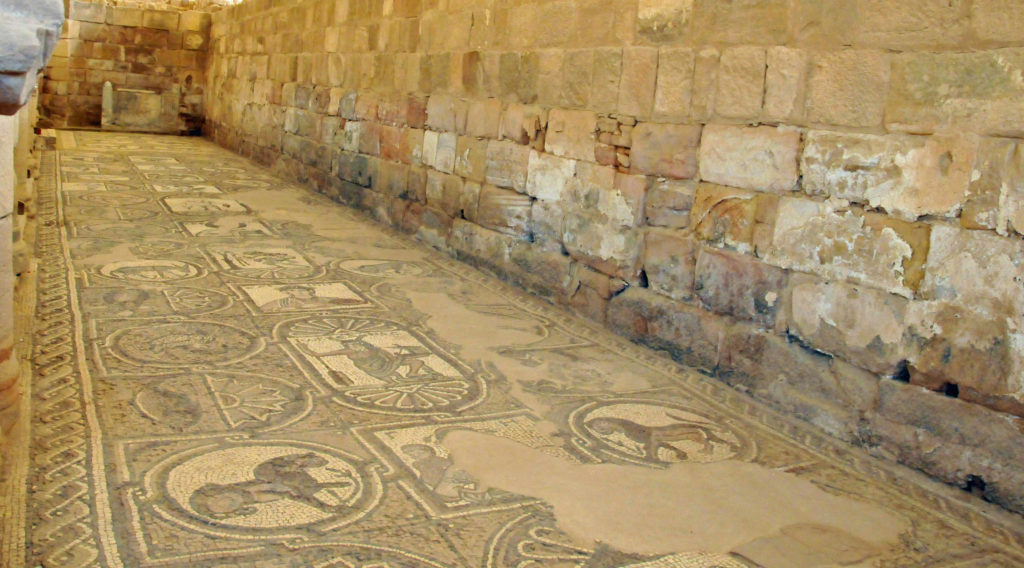
Every year about one million people visit Petra, the ancient city in southern Jordan famous for elaborate facades carved in pink sandstone. A bonus is a Byzantine church featuring evocative mosaics on its floors.
In about 400 B.C., the Nabateans, a nomadic people, founded Petra at the center of trading routes crisscrossing the Middle East. By 200 B.C., the Nabateans had prospered through trade and used their wealth to make Petra an impressive capital. In 106 B.C., the Roman Empire annexed the area controlled by the Nabateans and made it part of the Arabian Province. By the third century A.D., Petra contained a few Christians. The number of Christians in Petra grew after Emperor Constantine made Christianity legal in 313 A.D. In 450 A.D., Petra’s Christians erected a large church on a hill overlooking the colonnaded main street. The church was destroyed by fire in the early seventh century and abandoned by the Muslims who then controlled the area.
The remains of the church were discovered in 1990. Much of the church’s interior had been looted for other buildings, but two aisles, covered in mosaics on either side of the church, remained largely intact. The mosaics include personifications of the seasons, sensual depictions of human beings with life-like faces and a variety of animals. The apparent intent was to show the extent of God’s creative works. In 1993, 140 papyrus scrolls were discovered in a room near the church, carbonized in the fire that destroyed the church. The dated scrolls, written in an early form of Arabic, describe transactions involving important members of the church between 537 and 594. Archaeologists have discovered two other churches near the large church, suggesting both that Christianity was a minority religion, relegated to a small section of town, and that not all of Petra’s Christians shared the same beliefs.